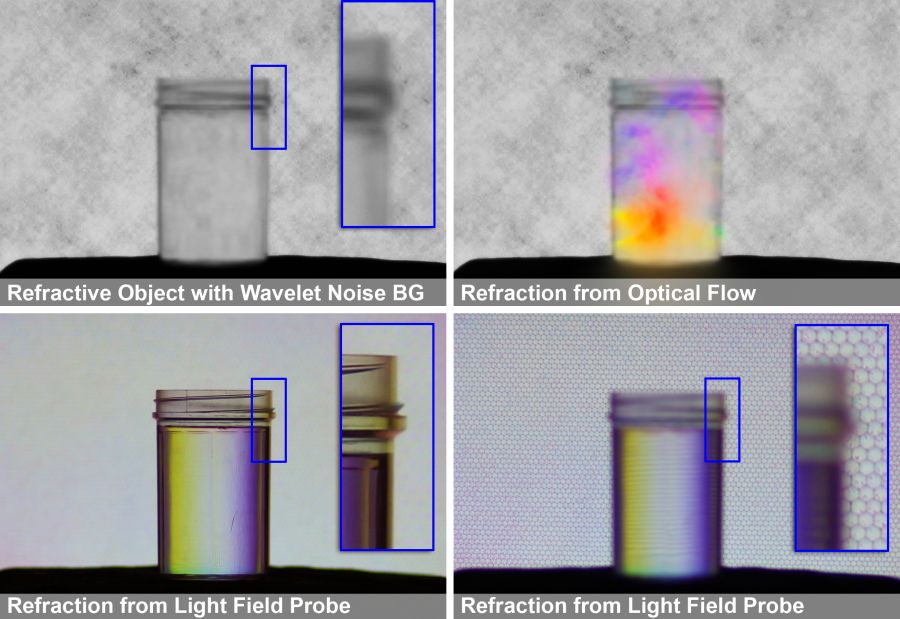 |
|
Light field probes -when included into the background
of a scene- allow otherwise invisible optical properties to be photographed.
In this example, the probe contains a classic Rainbow
Schlieren filter that codes the angles and magnitudes of complex
refractive events in hue and saturation. |
Abstract
We introduce a new approach to capturing refraction in transparent media, which we call Light Field Background Oriented Schlieren Photography (LFBOS). By optically coding the locations and directions of light rays emerging from a light field probe, we can observe and measure changes of the refractive index field between the probe and a camera or an observer. Rather than using complicated and expensive optical setups as in traditional Schlieren photography we employ commodity hardware; our prototype consists of a camera and a lenslet array. By carefully encoding the color and intensity variations of a 4D probe instead of a diffuse 2D background, we avoid expensive computational processing of the captured data, which is necessary for Background Oriented Schlieren imaging (BOS).We analyze the benefits and limitations of our approach and discuss application scenarios.
Results
 |
|
A lenticular light field probe encoding 1D directional light variation of the refraction created by a lens with an intensity gradient.
This type of filter resembles the knife edge filter of traditional Schlieren photography in the specific direction. Left: probe encoding a
horizontal intensity gradient without any object; center left: convex lens with uniform background illumination; center right: lens in front
of the probe; right: lens in front of the rotated probe. |
 |
|
A plate in front of a uniform background (left), and a light field probe that encodes directional variation caused by refraction with
a horizontal (center left) and a vertical (center right) intensity gradient. The magnifications (right) and the structure on the plate show how
otherwise invisible information is revealed with our probes. The color bar, mapping colors to magnitudes of refraction, is computed from
the field of view of the lenticulars and a calibration gradient that is cropped from the photographs. |
 |
|
A variety of directional filters can be encoded in our probes. From left: uniform background, annular bright field, annular dark
field, circular intensity gradient, horizontal cutoff, and vertical cutoff. |
 |
|
The classic Rainbow Schlieren filter encoded in our light field probe can visualize magnitudes and angles of refractions in complex
media such as this mix of clear corn syrup and water. |
 |
|
Light Field Background Oriented Schlieren photography compared to a failure case of background oriented Schlieren
imaging. Optical flow algorithms in BOS require the background to be focused, which places the object out-of-focus (upper left).
In this case, the refractions are so strong that they blur out the background pattern and therefore prevent a reliable optical flow
estimation (upper right). Our LFBOS works for in-focus (lower left) and out-of-focus settings (lower right). |
Files
| Paper | [pdf] [bib] |
| Supplemental material | [pdf] |
| Video | [mov] |
| Presentation | [ppt] |
Related Projects
Time-resolved 3D Capture of Non-stationary Gas FlowsAn Evaluation of Optical Flow Algorithms for Background Oriented Schlieren Imaging
Schlieren and Shadowgraph Techniques (Textbook)